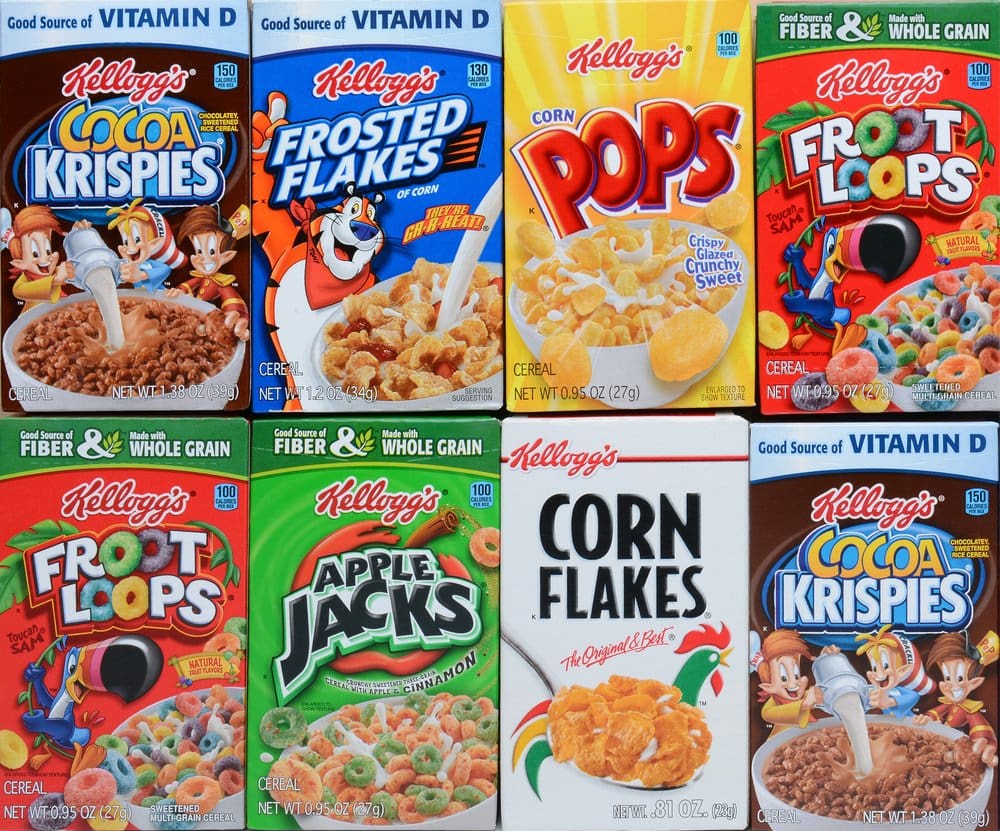Obesity is a multifactorial disease. No surprise there. Environment, advertising, behavior, politics, along with a dozen other factors, play a role. What about your breakfast cereal or wall-to-wall carpeting? In the case of the cereal, unless you’re chowing down on a box or two a day of Frosted Flakes you wouldn’t think so. However, new research is pointing out that chemicals added to breakfast cereals and other everyday products could be contributing to our weight woes.
In a just published study in the peer-reviewed journal Nature Communications, researchers tested the effects of three known human endocrine-disrupting chemicals: Butylhydroxytoluene (BHT), an antioxidant commonly added to breakfast cereals and other foods to protect nutrients and keep fats from turning rancid; perfluorooctanoic acid (PFOA), a polymer found in non-stick cookware, carpeting and other products; and tributyltin (TBT), a paint compound that can make its way into water and accumulate in seafood.

In the study, the researchers used epithelium (hormone-producing tissues lining the gut) and neuronal tissue from the hypothalamus—the brain’s primary appetite and metabolic regulator—grown from human stem cells to demonstrate how chronic exposure to these chemicals can interfere with signals sent from the digestive system to the brain that let people know when they are “full” during a meal. The investigators exposed the tissues to BHT, PFOA and TBT, one by one and in combination, and observed what happened inside the cells.
The researchers found that all three chemicals, including BHT, damaged hormones that communicate between the gut and the brain. In fact, of the three chemicals tested, BHT produced some of the strongest detrimental effects. When the researchers tested the three together the effect was even more pronounced, leading them to conclude that these endocrine disrupting chemicals adversely impact the hormones critical to gut-to-brain signaling. When this signaling system crashes, people may continue eating, unable to recognize when they’re full, leading to weight gain. The chemicals also damaged mitochondria—the cellular structures that convert food and oxygen into energy and drive the body’s metabolism.
Making Sense of the Results
What’s so potentially beneficial about the new testing system is that could provide a safe, efficient and cost-effective method evaluate the health effects of thousands of existing and new manmade chemicals. This is critical from a prevention perspective since the researchers demonstrated that the chemical damage occurred in early-stage, or young cells, suggesting that a defective hormone system potentially could impact a pregnant mother, as well as her unborn baby. In fact, we know this is the case from recent discoveries in the field of epigenetics, which is the study of potentially heritable changes in gene expression that do not involve changes to the underlying DNA
Each of us starts life with 20,000 to 25,000 sets of genes. But pollutants and toxic manmade chemicals alter our genes—not by mutating them, but by sending signals that silence them or switch them on or off at the wrong times. This what is meant by the expression “epigenetic change.” Exposure to these substances, especially in the womb and shortly after birth, can increase our susceptibility to many diseases and this susceptibility persists long after the exposure is gone, even decades later, say the researchers.
Our Toxic Soup
More than 80,000 chemicals are registered for use in the U.S. They’re ubiquitous in many foods, personal care products, household cleaners and lawn-care products. Yes, few of these chemicals appear to pose a direct risk to human health. But as I explain to my patients, what we really don’t know is the cumulative effect of these chemicals on our health. What we do know, however, is that 36 to 38 percent of U.S. adults—and 17 percent of children—are considered obese and despite billions of dollars spent and countless lives lost, we really haven’t made a dent in the problem.
Cost and ethical issues, including the health risk of exposing people to possibly harmful substances, are among the roadblocks to testing the effects of these chemicals on people. However, testing these chemicals on actual human tissues in the lab could potentially make the evaluation process easier, safer and more effective, while saving millions of live along the way.
What could be better than that?


